Intel's Ivy Bridge: An HTPC Perspective
by Ganesh T S on April 23, 2012 12:01 PM EST- Posted in
- Home Theater
- Intel
- HTPC
- Ivy Bridge
We briefly looked at the various knobs available in the graphics control panel in the previous section. In this section, we will take a look at some of those knobs in action. In our piece on discrete HTPC GPUs, we had explained clearly about the basics of cadence detection and why it is necessary. We had also included a gallery with screenshots of various GPUs playing back the Spears & Munsil Wedge Pattern. The 2:3:2:3 cadence is undoubtedly the most common pattern. The pictures below show the effect of the film mode detection knob on the wedge pattern clip. If you refer back to the gallery, you will find that all GPUs other than the GT 430 had trouble with properly identifying the cadence and performing deinterlacing appropriately. The Intel HD Graphics 4000 has no trouble with this clip.
Deinterlacing works as expected in PowerDVD and also EVR-CP / madVR (which implement DXVA2 deinterlacing).
For reference, a screenshot of the non-deinterlaced version can be found as the penultimate picture here.
The quality of chroma upsampling differs from GPU to GPU, and even within the same GPU, it depends on the driver version. It is generally accepted that madVR provides one of the best upsampling algorithm implementations for rendering purposes. In fact, the end-user has the ability to opt for an upsampling algorithm of his choice. We took the HQV clip for testing chroma upsampling, and played it in both PowerDVD as well as MPC-HC with madVR. The two screenshots below show the magnified view of a particular area in the clip. The madVR quality is visibly better, but the PowerDVD version is no slouch either. There is almost no colour bleeding or any other artifacts similar to what we saw in the AMD 7750 review. The full screenshots are available here (madVR) and here (PowerDVD).
PowerDVD Chroma Upsampling
madVR Chroma Upsampling (Default Algorithm)
One of the interesting aspects of the noise reduction knob is the fact that we have separate controls for luma / luma and chroma. The gallery below has the feature in action.
Adaptive contrast enhancement works as advertised, enabling HD 4000 to comfortably score the maximum possible points in that section of the HQV benchmark.


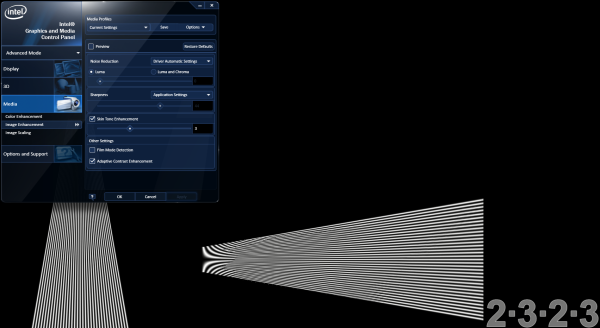
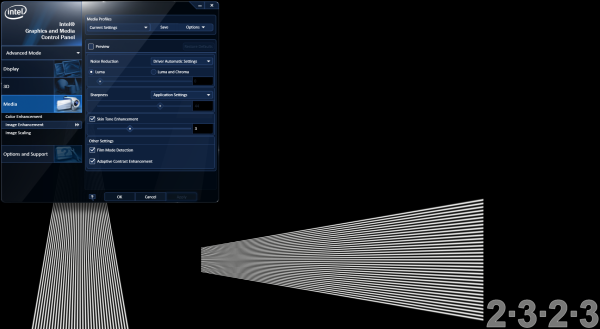
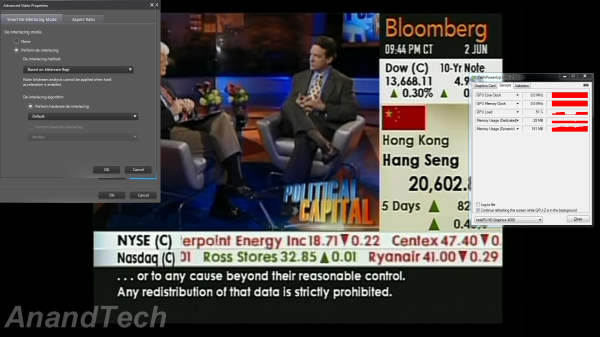
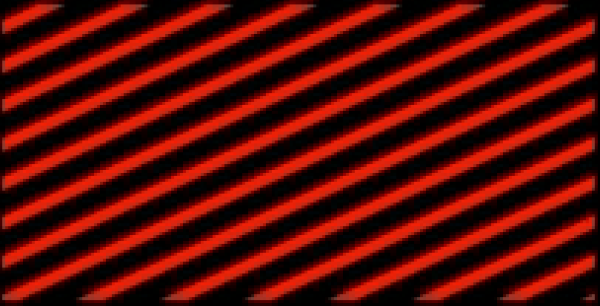
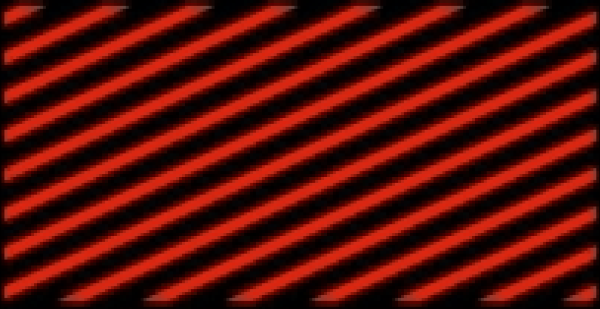




















70 Comments
View All Comments
MGSsancho - Monday, April 23, 2012 - link
While I agree with most everything there is something I would like to nit pick on, While making a digital copy of old film in what ever format you use, more often than not a lot of touching up needs to be done. Wizard of OZ and all the 007 films can be an example. (I am ignoring the remastering of Star Wars and Lucas deciding to add in 'features' vs giving us a cleaned up remaster sans bonuses.) Still when your spending millions in remaster I expect at least not muddy the entire thing up.However I feel we need to bring in higher bitrates first. I will not apologize over this, yes encoders are great but a 4mbs 1080p stream still is not as good as nice as a 20mb-60mb vbr blu-ray film The feeling that a craptastic 4k or even 2k bitrate will ruin the expedience for the non informed. Also notice I am ignore an entire difference debate whether the current can candle true HD streaming to every household, at least in the US.
nathanddrews - Monday, April 23, 2012 - link
Higher bit rates will be inherent with 4K or 2K over 1080p, but bit rates aren't the be all end all. 4K will likely use HVEC H.265 which offers double the compression with better quality than H.264.Fixing scratches, tears, or other issues with film elements should never be a reason for mass application of filtering.
SlyNine - Tuesday, April 24, 2012 - link
H.264 doesn't even offer 2x the compression over Mpeg 2. I doubt H.265 offers 2x over 264."This means that the HEVC codec can achieve the same quality as H.264 with a bitrate saving of around 39-44%."
Source http://www.vcodex.com/h265.html
Casper42 - Monday, April 23, 2012 - link
I LOL'd at "Walmart Black Friday" Nathan :)And for the OP, 32", really?
Its completely understandable you don't see the difference on a screen that size.
Step up to a 60" screen and then go compare 720p to 1080p (who uses 1080i anymore, oh thats right, crappy 32" LCDs. Don't get me wrong, I own 2, but they go in the bedroom and my office, not my Family Room.)
I think 60" +/- 5" is pretty much the norm now a days for the average middle class family's main movie watching TV.
anirudhs - Monday, April 23, 2012 - link
Cable TV maxes out at 1080i ( I have Time Warner). My TV can do 1080P.nathanddrews - Monday, April 23, 2012 - link
1080i @ 60 fields per second when deinterlaced is the same as 1080p @ 30 fields per second. The picture quality is almost entirely dependent upon your display's ability to deinterlace. However, cable TV is generally of a lower bit rate than OTA or satellite.SlyNine - Tuesday, April 24, 2012 - link
Yea but because of shimmering effects progressive images almost always looks better.If the video is 2:2 or 3:2 many tv's can build the frame in to a progressive image anymore.
Exodite - Tuesday, April 24, 2012 - link
In the US, possibly, but I dare say 55-60" TVs are far from the norm everywhere.peterfares - Thursday, September 27, 2012 - link
2560x 27" and 30" monitors are NOT very pixel dense. 27" is slightly more dense (~12.5% more dense) than the standard display but the 30" is only about 4% more dense than a standard displaya 1920x1080 13.3" display is 71.88% more dense than a standard display.
dcaxax - Tuesday, April 24, 2012 - link
On a 32" you will certainly not see a difference between 720p and 1080p - it is barely visible on a 40". Once you go to 52"+ however the difference becomes visible.On a 61" screen as you suggest the difference will be quite visible.
Having said that I am still very happy with the Quality of properly mastered DVD's which are only 576p on my 47" TV.
It's not that I can't tell the difference, its just that it doesn't matter to me that much, which is why I also don't bother with MadVR and all that, and just stick to Windows Media Center for my HTPC.
Everyone's priorities are different.